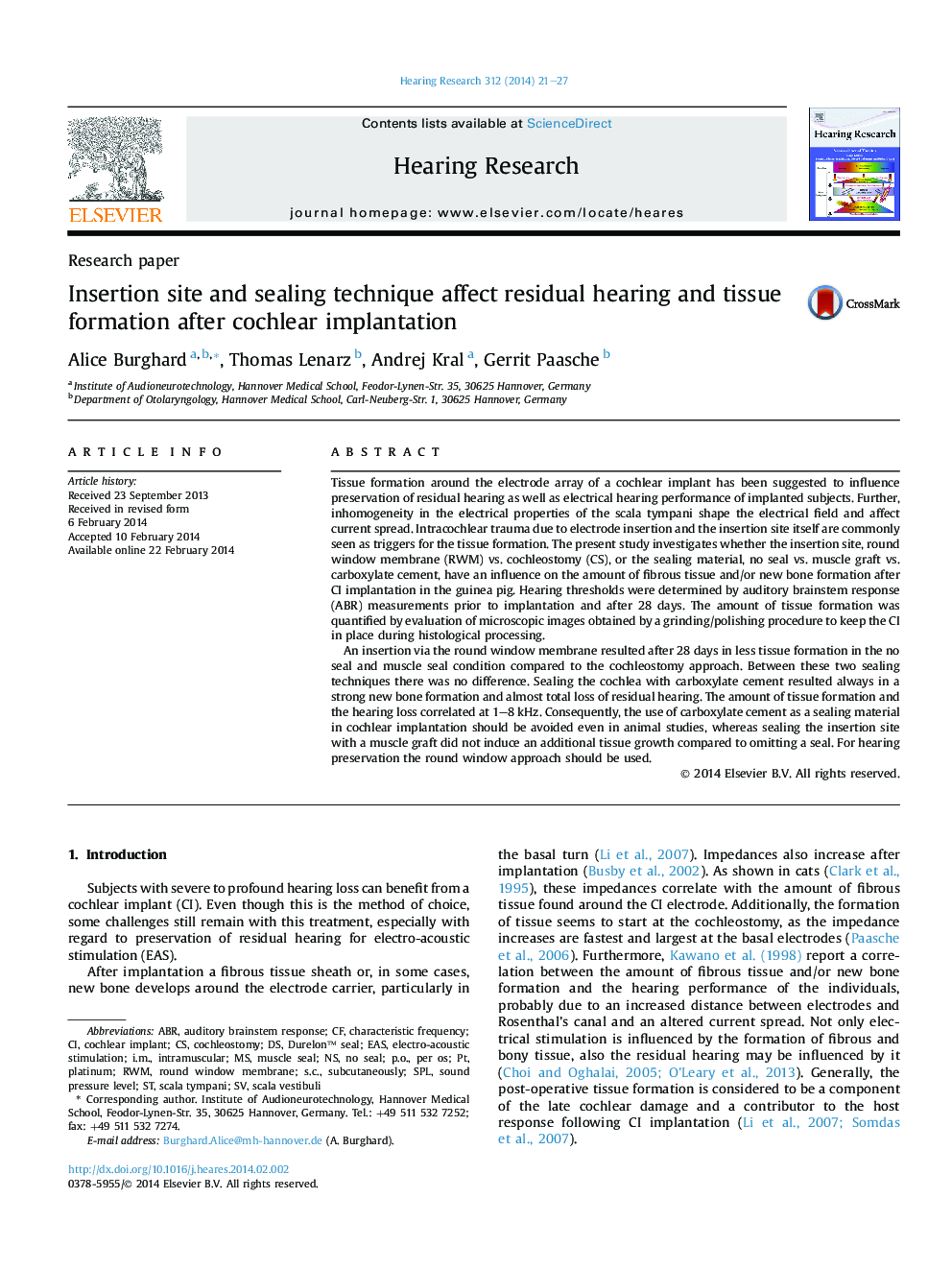| Article ID | Journal | Published Year | Pages | File Type |
|---|---|---|---|---|
| 6287392 | Hearing Research | 2014 | 7 Pages |
Abstract
An insertion via the round window membrane resulted after 28 days in less tissue formation in the no seal and muscle seal condition compared to the cochleostomy approach. Between these two sealing techniques there was no difference. Sealing the cochlea with carboxylate cement resulted always in a strong new bone formation and almost total loss of residual hearing. The amount of tissue formation and the hearing loss correlated at 1-8Â kHz. Consequently, the use of carboxylate cement as a sealing material in cochlear implantation should be avoided even in animal studies, whereas sealing the insertion site with a muscle graft did not induce an additional tissue growth compared to omitting a seal. For hearing preservation the round window approach should be used.
Keywords
Related Topics
Life Sciences
Neuroscience
Sensory Systems
Authors
Alice Burghard, Thomas Lenarz, Andrej Kral, Gerrit Paasche,
